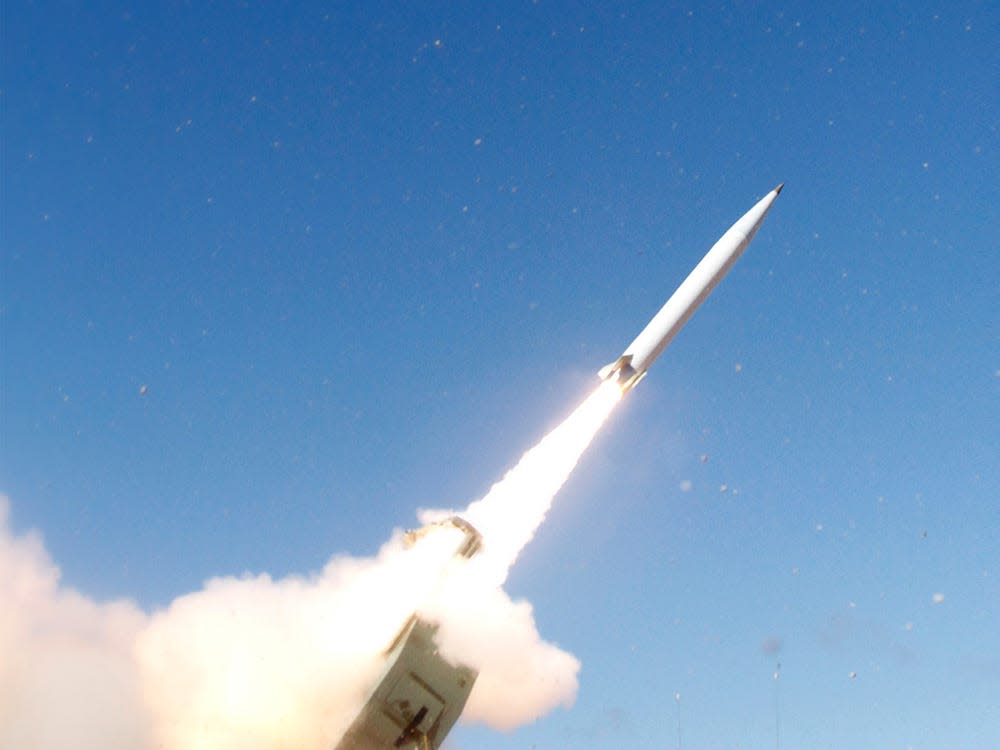The US Army just got its first delivery of the new missile that will replace its powerful ATACMS

The US Army is receiving its first delivery of a new, short-range ballistic missile.
The Precision Strike Missile can travel 250 miles and be outfitted with a cluster munition payload.
It's set to replace the Army's arsenal of powerful ATACMS, some of which have been sent to Ukraine.
The US Army just received its first batch of a new, short-range ballistic missile that's set to eventually replace its arsenal of powerful MGM-140 Army Tactical Missile Systems, or ATACMS, tactical ballistic missiles with a longer reach than artillery.
In a Friday statement, the Army announced an initial delivery of its next-generation Precision Strike Missile (PrSM) following successful qualification testing of its baseline variant — called Increment 1 — last month.
"The Precision Strike Missile will provide Joint Force commanders with a 24/7, all-weather capability that will counter the enemy's ability to conduct combat maneuver and air defense operations," Assistant Secretary of the Army for Acquisition, Logistics and Technology Doug Bush said in a statement.
"The rapid development and delivery of this capability," he added, "is a prime example of the Army's aggressive use of new acquisition authorities from Congress that allow us to move at much greater speed to get improved equipment to Soldiers."

Developed by Lockheed Martin, the PrSM is a surface-to-surface missile that can be launched from the M142 High Mobility Artillery Rocket Systems (HIMARS) and M270A2 Multiple Launch Rocket Systems.
According to the Army's Acquisition Support Center, the missile is capable of performing in all weather conditions and can be outfitted with a cluster munitions payload, allowing it to scatter small bomblets over a large area in the middle of its flight.
The Army said in November that the Increment 1 variant will soon replace its inventory of ATACMS, "significantly" extending the range and lethality of the military's long-range precision fires.
The PrSM's 250-mile range easily surpasses the maximum distance that any ATACMS variant can travel, which is a maximum of 186 miles with a unitary warhead. The new missile also doubles the volume of fire for a HIMARS launch pod, which can hold two PrSMs as opposed to just a single ATACMS munition, according to a Pentagon document detailing the PrSM program.
ATACMS have entered the spotlight amid Russia's war against Ukraine, which long sought to acquire the missiles from the US in an attempt to build-up its stockpile of longer-range fires. Washington, however, was reluctant to do so, citing pressure on its own inventory of the weapons and concerns over potential escalation.
Kyiv eventually received a secret shipment of a small number of the M39 ATACMS variant, a deadly cluster missile that's packed with nearly 1,000 submunitions and has a range of around 100 miles. The weapon made its debut in Ukraine in a series of devastating strikes on Russian airbases in October, destroying a number of helicopters and raising questions about how Moscow might reassess protecting its vulnerable assets.
The missiles, however, have since fallen quiet, with no recent ATACMS strikes of note.

It's unclear whether the introduction of the PrSM into the US Army will alleviate strains on the US stockpile and create opportunities for more ATACMS to head to Ukraine. It comes at a time of widespread uncertainty over long-term Western military support for Kyiv and a disappointing outlook on the battlefield, where the front line has remained largely unchanged for months.
The Biden administration has sounded the alarm that without more funding from Congress, it will not be able to provide Ukraine with the security assistance needed to continue defending against the Russian invasion, which is inching closer toward the two-year mark.
"Congress cannot let [Russian President Vladimir] Putin prevail," White House Press Secretary Karine Jean-Pierre told reporters on Wednesday, stressing that "the stakes are just too high."
Read the original article on Business Insider


